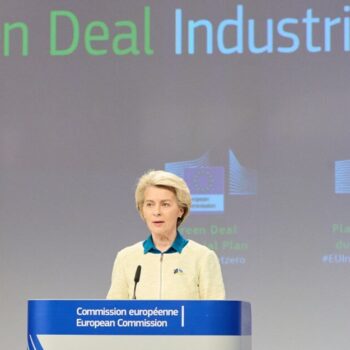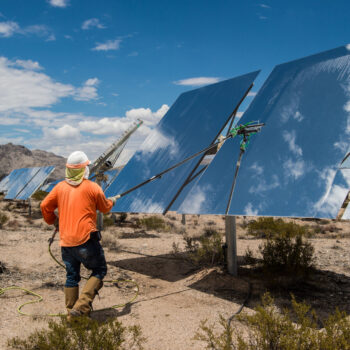As the biggest energy importer anywhere in the world, a strong push on energy efficiency in the EU makes sense. Since 2008 the EU has slowly but steadily been working to improve its energy efficiency. It now holds the record as the most efficient bloc in the world. This means although the EU economy has expanded by around a third since 1990, energy usage has been stabilised across the bloc at the same levels used back then. This is remarkable – especially so given the burgeoning numbers of new gadgets and devices we increasingly rely upon for everyday life.
Yet despite the well documented GDP and energy security gains and system cost reductions that would come from a strong push on energy efficiency, there is a risk that the 2030 energy efficiency target agreed by the European Council on 23/24 October will be set at 30% and be indicative only. A target set this low will mean that Europe will go no slower – but also no faster – than it is currently on energy efficiency. The negative implications of this for European security, prosperity and competitiveness cannot be underestimated. This is something big businesses such as IKEA, Philips and Unilever get – but that some Governments, notably the UK, seem to have yet to realise.
Despite good progress on energy efficiency in some countries and sectors, progress overall has been patchy. Germany has been identified as the most efficient economy in the world. But in terms of recent progress, the biggest energy savings made during 2008-2012 were by Bulgaria, Denmark, Greece, Hungary and Slovakia. In contrast, progress on energy efficiency declined in Austria, Estonia, Latvia, Lithuania, Luxembourg and Poland during the same period. Similarly in areas where mandatory European-led regulation has been introduced, there has been a significant impact on reducing energy use in Europe. For example the CO₂ in Cars Regulation has been a key driver of rising transport efficiency standards – with vehicle efficiency improving 28% since 1995. In buildings, regulations on energy use in new buildings requiring house builders to fit insulation, superefficient windows etc, mean new homes consume 40% less energy compared to 20 years ago. Energy efficiency in appliances has also picked up markedly in recent years, driven by more stringent products standards and labelling. Rising energy prices have driven efficiency gains in industry – but the picture is mixed, with significant opportunities to further reduce energy use, especially in central and eastern European countries, left untapped. All this argues for a stronger not weaker push on efficiency to 2030 – a binding target being the obvious next step.
This would also have a strong social benefit. There are now 56m Europeans unable to keep their homes warm. Many of these people live in the central and eastern Member States that are most exposed to the Russian energy security threat and at the same time have the worst record on implementing the national legislation required under the Energy Efficiency Directive. Some governments, instead of asking for help to improve the energy efficiency of their economies, have focused on demanding support for new gas infrastructure and carve outs for new coal. Putting aside for a moment the adverse impact on GHG emissions, these types of investments will deliver a poor impact in terms of energy security gains or public investment to create local jobs compared to the alternative of investing in more efficient energy use.
Introducing a binding EU 2030 energy efficiency target within the package would provide some compulsion to these Member States to turn the Energy Efficiency Directive into national laws that would unlock public and private investment opportunities to remedy this situation – making homes warm, industry competitive and putting them on the pathway to least cost decarbonisation. The ‘public’ part of the financing question could be answered through ring-fencing some of the west-to-east financial transfers undertaken through the Modernisation Fund that is expected to be part of the final 2030 deal and programmed into forthcoming EU Budget. This of course could still happen but will look less likely without some degree of mandation in the 2030 package.
So what next for the energy efficiency agenda? Certainly the lack of a binding target, if it comes to pass, will be a blow – but of course targets are not the be all and end all. There will be opportunities under the new Energy Union to create a space for the equal treatment of demand side and supply side markets that can promote energy efficiency investment. Similarly in the Capital Market Union there needs to be a focus on ensuring the financial reforms governing capital market investment in infrastructure promote and don’t penalise investment in efficiency. The 2030 governance discussion creates a space in which to deliver the institutional and economic reforms needed to address some of the more onerous market barriers and transaction costs. Finally, tightened and properly implemented market-based regulation can continue to see energy efficiency ramped up both in product manufacturing and building refurbishments.
There is still everything to play for. But in terms of ensuring the low carbon transition is done at least cost and in a way that is fair to regular citizens not just big business, without binding energy efficiency targets the job will be a lot harder.


